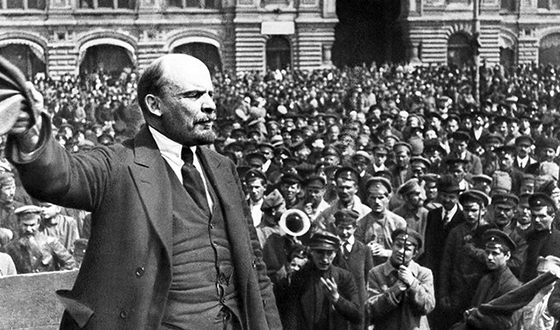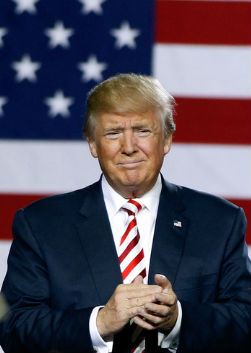Leonardo da Vinci
 Italian painter, sculptor, architect, engineer, technician, scientist, mathematician, anatomist, botanist, musician, philosopher of the High Renaissance era. Leonardo da Vinci was born on April 15, 1452 in the town of Vinci, near Florence. His father, Señor, Messer Piero da Vinci, was a rich notary, as were the four previous generations of his ancestors. When Leonardo was born, he was about 25 years old. Piero da Vinci died at 77 years old (in 1504), during his life he had four wives and was the father of ten sons and two daughters (the last child was born when he was 75 years old). Almost nothing is known about Leonardo’s mother: in his biographies some “young peasant woman” Katerina is most often mentioned. In the Renaissance, illegitimate children were often treated the same as children born in wedlock. Leonardo was immediately recognized by his father, but after birth he was sent with his mother to the village of Anchiano.
Italian painter, sculptor, architect, engineer, technician, scientist, mathematician, anatomist, botanist, musician, philosopher of the High Renaissance era. Leonardo da Vinci was born on April 15, 1452 in the town of Vinci, near Florence. His father, Señor, Messer Piero da Vinci, was a rich notary, as were the four previous generations of his ancestors. When Leonardo was born, he was about 25 years old. Piero da Vinci died at 77 years old (in 1504), during his life he had four wives and was the father of ten sons and two daughters (the last child was born when he was 75 years old). Almost nothing is known about Leonardo’s mother: in his biographies some “young peasant woman” Katerina is most often mentioned. In the Renaissance, illegitimate children were often treated the same as children born in wedlock. Leonardo was immediately recognized by his father, but after birth he was sent with his mother to the village of Anchiano.
At 4, he was taken to his father’s family, where he received his primary education: reading, writing, mathematics, and Latin. One of the features of Leonardo da Vinci is his handwriting: Leonardo was left-handed and wrote from right to left, turning the letters so that the text was easier to read with a mirror, but if the letter was addressed to someone, he wrote traditionally. When Piero was over 30, he moved to Florence and established his business there. To find work for his son, his father brought him to Florence. Being illegally born, Leonardo could not become a lawyer or a doctor and his father decided to make him an artist. At that time, artists who were considered artisans and did not belong to the elite, stood a little higher than tailors, but in Florence they felt much more respect for painters than in other city-states.
In 1467-1472 Leonardo studied with Andrea del Verrocchio, one of the leading artists of that period, a sculptor, bronze-castor, jeweler, organizer of festivities, one of the representatives of the Tuscan school of painting. The talent of Leonardo the artist was recognized as a teacher and public when the young artist was barely twenty years old: Verrocchio received an order to paint the painting “Baptism of Christ” (Uffizi Gallery, Florence), the secondary figures were to be written by the students of the artist. Tempera paints were used for painting at that time — egg yolk, water, grape vinegar, and color pigment — and in most cases the paintings were dull. Leonardo ventured to paint the figure of his angel and the landscape with recently opened oil paints. According to legend, seeing the work of the student, Verrocchio said that “he was surpassed, and henceforth only Leonardo would write all the faces.”
He masters several techniques of drawing: Italian pencil, silver pencil, sanguine, pen. In 1472, Leonardo was accepted into the painters’ guild – the guild of St. Luke, but remained to live in the house of Verrocchio. He opened his own workshop in Florence between 1476 and 1478. April 8, 1476 Leonardo da Vinci on the denunciation was accused of sadomey and arrested along with three friends. At that time, in Florence, the sadomea was a crime, and the highest measure was the burning of the pillar. Judging by the records of that time, many doubted Leonardo’s guilt, neither the prosecutor nor the witnesses were ever found. The fact that among those arrested was the son of one of the grandees of Florence probably avoided a harsh sentence: there was a trial, but the guilty were released after a short spanking.
In 1482, having received an invitation to the court of the ruler of Milan Lodovico Sforza, Leonardo da Vinci unexpectedly left Florence. Lodovico Sforza was considered the most hated tyrant in Italy, but Leonardo decided that Sforza would be his best patron than the Medici, who ruled Florence and disliked Leonardo. Initially, the duke took him as the organizer of the court holidays, for which Leonardo invented not only masks and costumes, but also mechanical “miracles.” Magnificent holidays worked to increase the glory of the Duke of Lodovico. For a salary less than that of a court dwarf, in the castle of the duke Leonardo he performed the duties of a military engineer, hydraulic engineer, court painter, and later an architect and engineer. At the same time, Leonardo “worked for himself,” working on several areas of science and technology at the same time, but did not pay him for most of the work, since Sforza did not pay any attention to his inventions.
In the years 1484-1485 about 50 thousand inhabitants of Milan died from the plague. Leonardo da Vinci, who considered the reason for this overpopulation of the city and the dirt that reigned in the narrow streets, suggested to the duke to build a new city. According to Leonardo’s plan, the city should consist of 10 districts of 30 thousand inhabitants, each district should have its own sewage system, the width of the narrowest streets should be equal to the average height of the horse (several centuries later, the London State Council recognized the proportions suggested by Leonardo and ordered to follow them when breaking new streets). The project of the city, like many other technical ideas of Leonardo, the duke rejected.



